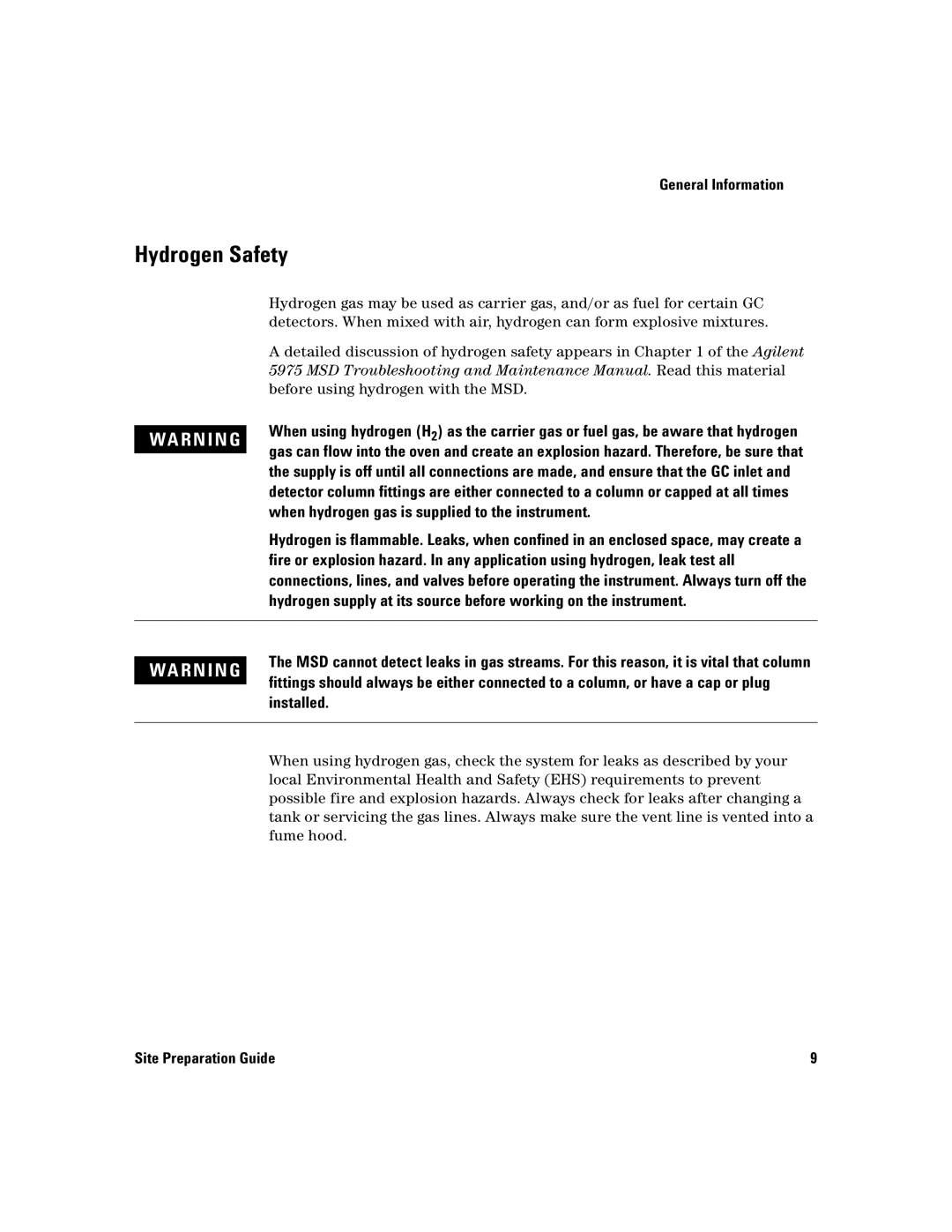General Information
Hydrogen Safety
| Hydrogen gas may be used as carrier gas, and/or as fuel for certain GC | |
| detectors. When mixed with air, hydrogen can form explosive mixtures. | |
| A detailed discussion of hydrogen safety appears in Chapter 1 of the Agilent | |
| 5975 MSD Troubleshooting and Maintenance Manual. Read this material | |
| before using hydrogen with the MSD. | |
| When using hydrogen (H2) as the carrier gas or fuel gas, be aware that hydrogen | |
WA R N I N G | ||
| gas can flow into the oven and create an explosion hazard. Therefore, be sure that | |
| ||
| the supply is off until all connections are made, and ensure that the GC inlet and | |
| detector column fittings are either connected to a column or capped at all times | |
| when hydrogen gas is supplied to the instrument. | |
| Hydrogen is flammable. Leaks, when confined in an enclosed space, may create a | |
| fire or explosion hazard. In any application using hydrogen, leak test all | |
| connections, lines, and valves before operating the instrument. Always turn off the | |
| hydrogen supply at its source before working on the instrument. | |
|
| |
| The MSD cannot detect leaks in gas streams. For this reason, it is vital that column | |
WA R N I N G | ||
fittings should always be either connected to a column, or have a cap or plug | ||
| ||
| installed. | |
|
| |
| When using hydrogen gas, check the system for leaks as described by your | |
| local Environmental Health and Safety (EHS) requirements to prevent | |
| possible fire and explosion hazards. Always check for leaks after changing a | |
| tank or servicing the gas lines. Always make sure the vent line is vented into a | |
| fume hood. |
Site Preparation Guide | 9 |
